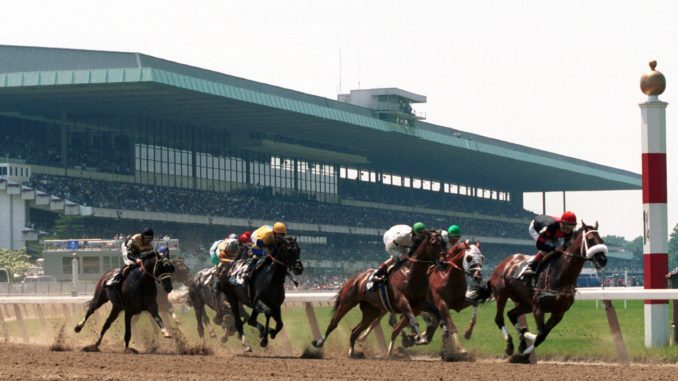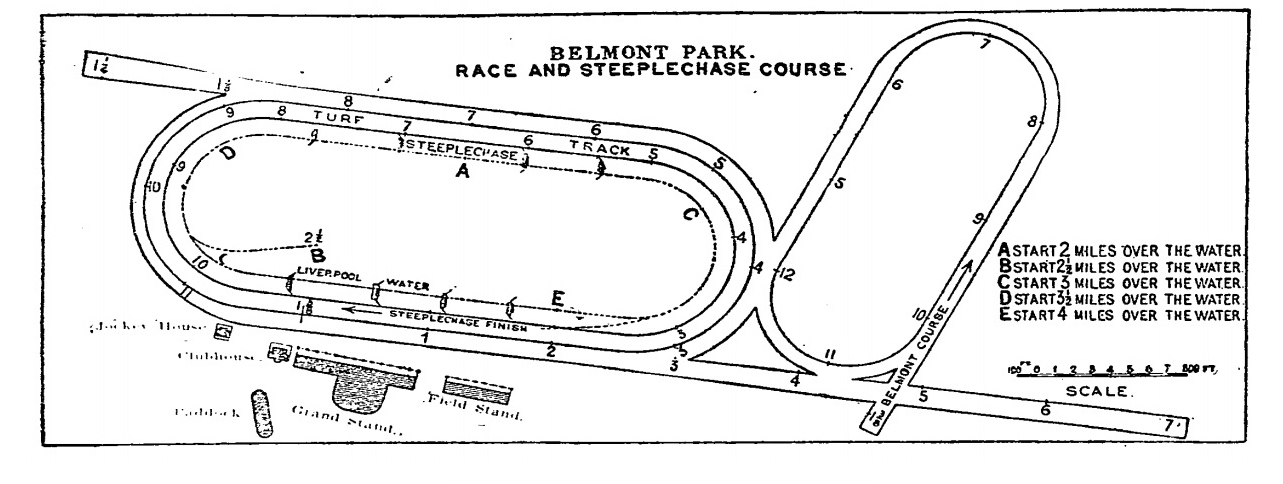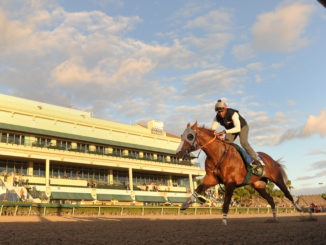
by TERESA GENARO
Though the first Belmont Stakes was run in 1867, it wasn’t run at Belmont Park until 1905.
The race was inaugurated at Jerome Park in what is now the Bronx, where it stayed until 1889, when it moved to Morris Park, also in the Bronx. Run there until Morris Park closed in 1904, the Belmont Stakes made its debut at its eponymous track on May 24, 1905.
Belmont Park had opened earlier that month with much fanfare; days of coverage were devoted to the opening of what one headline called, “The World’s Finest Race Course.” One preview proclaimed, “The biggest thing in the shape of a race course that ever has been conceived and achieved, will be opened for racing on Thursday of this week.”
Among the splashy track’s new features was the mile and a half oval with which we are all familiar, but this was not the “Belmont course,” according to an early map of the new park.

The Belmont had been run at various distances in its history, from 1 1/8 miles to a mile and five furlongs; the “Belmont course,” reportedly the course over which the Belmont Stakes would be run, was a mile and three furlongs.
Another feature of the new track was the direction in which the horses would run; at the new Belmont Park, races wouldn’t be run counter-clockwise, as was the custom in the United States. At Belmont, horses would run the other way, an idea that the Times said “would appeal to many racegoers.”
In its voluminous coverage, the Times noted visitors’ first reactions to the new track, which are not so dissimilar from those who come to Belmont for the first time now. “…They realized for the first time the immensity of the new racing plant…for size and spaciousness there is nothing in racing like its great infield…Bigness is stamped all over this newest and hugest of American racing plants.”
A filly, Ruthless, had won the very first running of the Belmont, in 1867 at Jerome Park, so it was perhaps fitting that another filly, Tanya, would win the first running at the track named for the family that gave its name to the race. But as the map indicates, the race that Tanya won bears no resemblance to the race that this year’s 12 Belmont Stakes starters will run. Says the 1905 race recap, “The race was won over the Belmont course, the start being made in the middle of the back stretch of the training track, and the horses, after making one turn on that course, coming on the main track and finishing down the regular stretch.”
If we think that jockeys unfamiliar with the Belmont course now are at a disadvantage, imagine what a newcomer must have felt about negotiating a right-hand turn and two tracks just to find the finish line. Jockey Eugene Hildebrand on Tanya apparently had no trouble.
Tanya’s Belmont was run at a mile and a quarter, not Saturday’s distance of a mile and a half, and the 11 jockeys will have to negotiate only one track, but regardless of where the race is run or how long it is, the winner of the Belmont Stakes gets to say that he–or she–conquered the Test of the Champion.



